DAY 5, Wednesday, VIVA LA PAZ!
Wednesday, July 18 (Day 5 & Our 4th wedding anniversary): We have a morning swim and we pack up our campsite into the Tacoma. We drive out from La Perla at 9:40 am and I note that we were 28 miles south of Mulegé.
There is another military inspection about 15 miles north of Loreto, and as at the others, it is brief and professional.
Thanks to our friend Phil C, we learned that the great fruit stand that was also across from the mission in Loreto, in 2009 was now only along Highway #1, just north of the divided part of the highway, about Km. 2.5. It is on the west side and you will see the tropical plants and signs for Coconut drinks, etc. It is called EL CAÑAVERAL and run by ‘Charley’. We ordered two fruit salads, and they were as amazing as we had remembered them from 2009. We also have a coconut horchata which was a great refresher in the hot, humid climate. The live iguana that we photographed in 2009 is no longer alive, but on display along with some other stuffed and live critters. Charley has several banners touting the nutritional value of the many fruits he serves in various preparations and drinks.
We are on the road again at 11:30 am and climb over the Sierra Giganta then the long drop west to Ciudad Insurgetes, where the highway turns south and becomes a four lane road to Ciudad Constitución, a large agricultural center on the Magdalena Plain. It is 175 miles from our fill up at Mulegé, so we top the tank just so we don’t roll into La Paz on fumes, 126 more miles to the south. It is 1:18 pm when we leave the station in Constitución. There were many reports of local police ticketing tourists for not fully stopping at the many signals going through town, or for speeding, or for nothing. We never saw a cop both times passing through this city. However, if stopped and you are certain you did not violate the law, then hold you ground, ask to go to the station and see the judge. Traffic fines are low in Mexico, despite what a cop may say to scare you into paying him a bribe. Chances are pretty high he will not waste any more time on you and look for weaker prey.
We arrive in La Paz at 3:54 pm and before heading to Steve (Bajatripper) and Zully’s home, we have a look at the Malecon in La Paz. A malecon is a wide sidewalk along the sea or harbor, often a social gathering area at sundown when it cools a bit. We arrive at Bajatripper’s to find a note saying they went to Tecolote Beach to drop their daughter off, and would be back about the time we got there, and sure enough, just as we finished reading the note, they pulled up!
Bajatripper (Steve) first lived in La Paz when his mother and step-father were doing archeological digs in southern Baja California, back in the early 1960’s. Look for scientific written works by William Massey and Lee de Massey.
Today, Steve and Zully have a beautiful home with a guest house and swimming pool that had previously been built for a general, stationed in La Paz. They have been remodeling and landscaping it and their work is commendable. We would be spending five nights there, but the next four full days we were out seeing and doing so many great things!
That evening, we all go out to the Malecon to see La Paz come alive as the sun sets! Viva La Paz!
Now some photos:
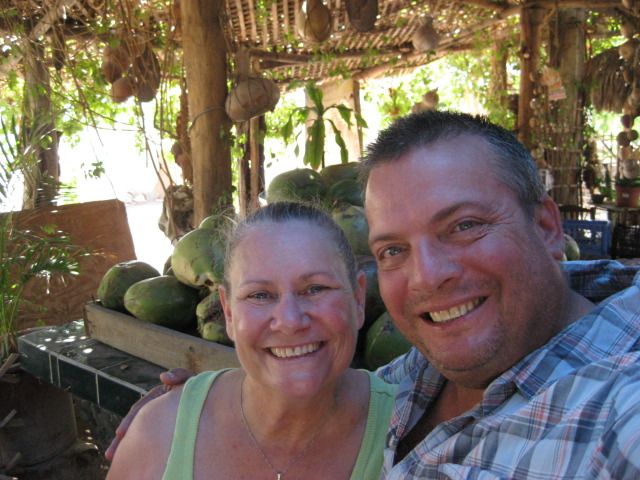
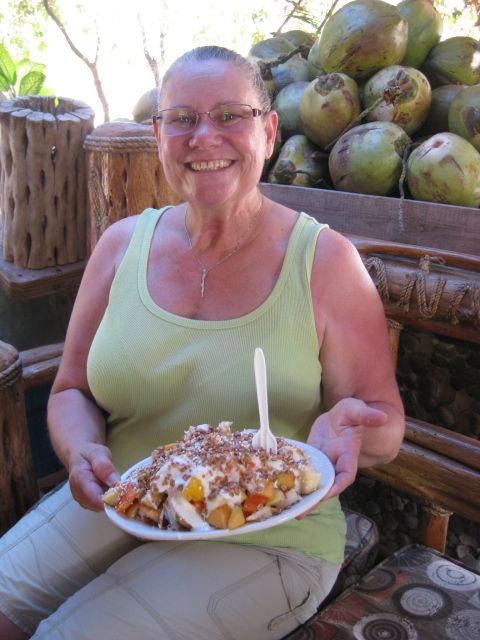
Loreto’s EL CAÑAVERAL fruit salad paradise.
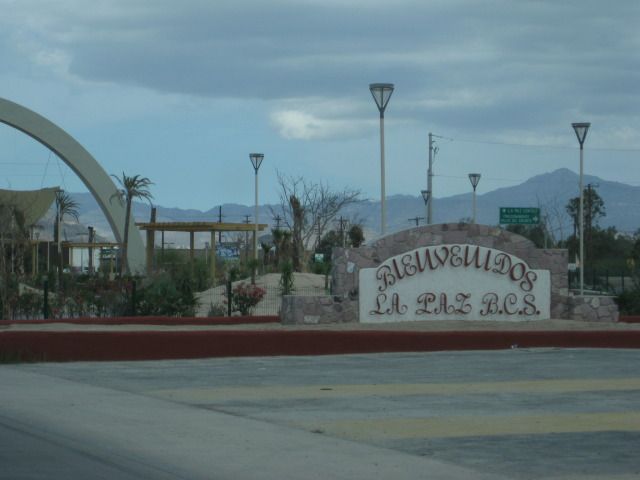
Welcome to La Paz, Baja California Sur.

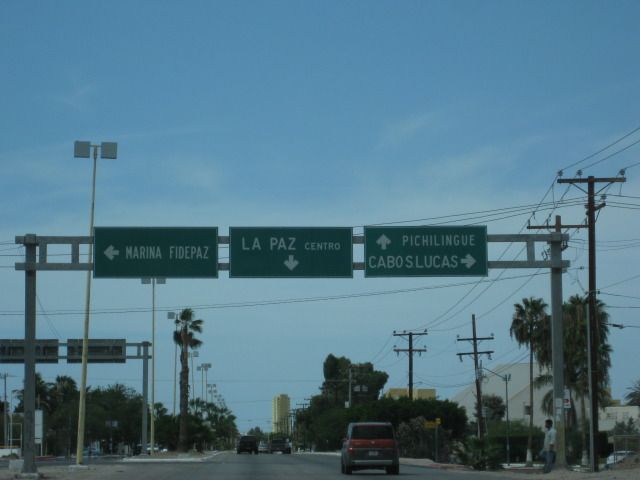

‘Bajatripper’ (Steve) and Zully.
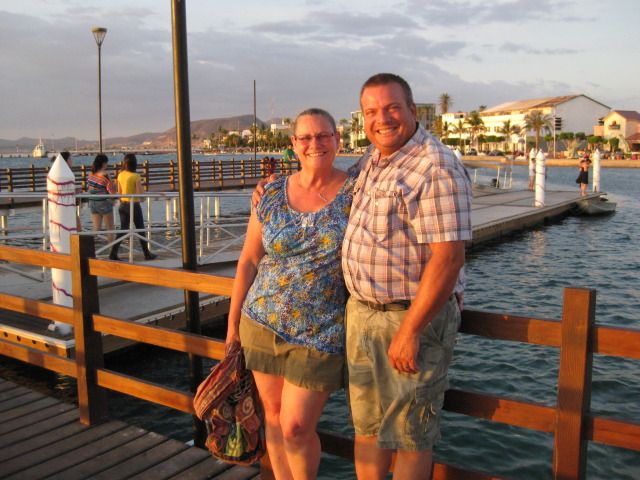
On the Malecon in La Paz
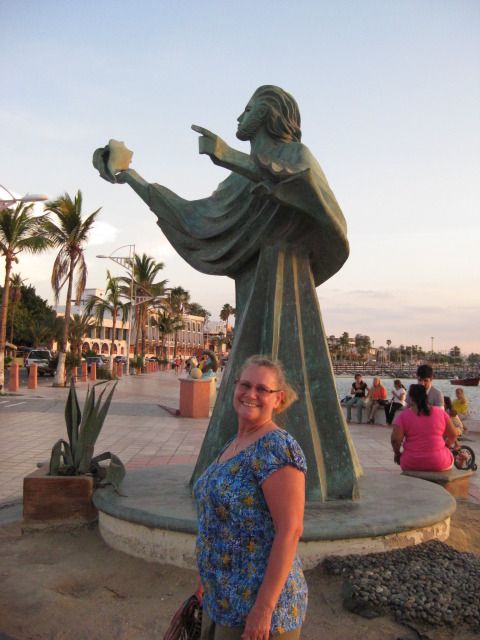

Married 4 years this day

What a great place!
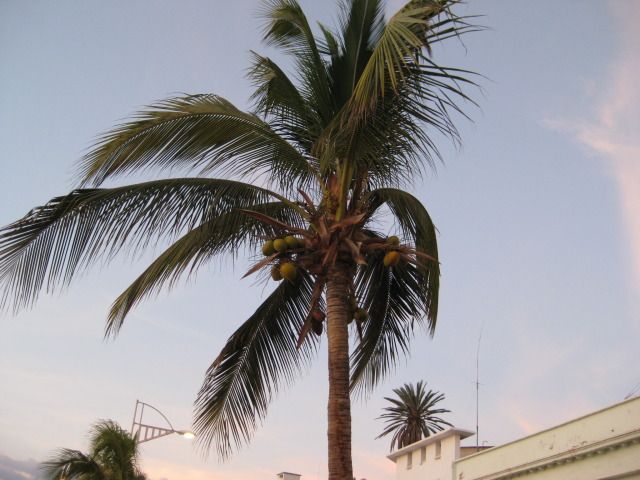
Our first big tour day begins tomorrow, DAY 6,stay tuned!
DAY 6: El Triunfo, San Antonio, Real de Santa Ana, San Bartolo, East Cape North
Thursday, July19th (Day 6): Today Bajatripper drives (I can use a break) and our first stop is to pick up some burritos for breakfast on the road. We pull up in the village of San Pedro, about 15 miles south of La Paz and Zully orders several yummy treats for us. This seems to be a popular item as others are doing the same for a meal on the go.
In a few more miles we climb into the tropical hills and arrive at El Triunfo, a gold and silver mine town born in 1862. The town grew to 10,000 inhabitants and was the largest town in Lower California for a short time. When a hurricane flooded the mines in 1918, activity had all but died here. The Boleo Company (of Santa Rosalía copper mine fame) tried to get operations going again, but gave up in 1926.
The ore mill ruins and railroad bridges are interesting as well as the cobblestone streets in a now quiet town. We spend a lot of time looking around and taking photos (see them below). It is sure great to have Steve as a historic travel guide! Too many things are missed unless you slow down and take a closer look.
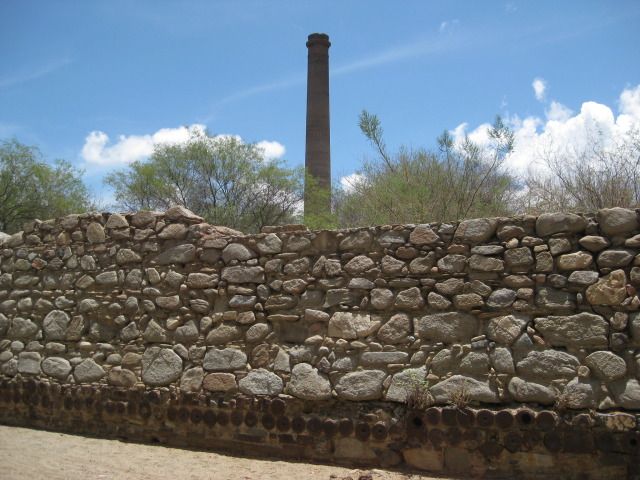

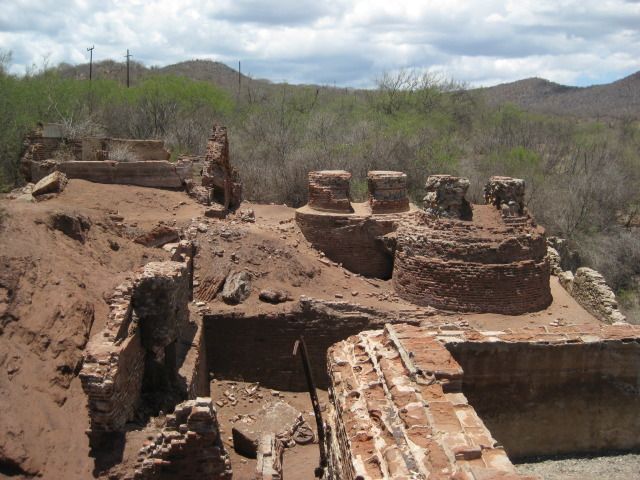
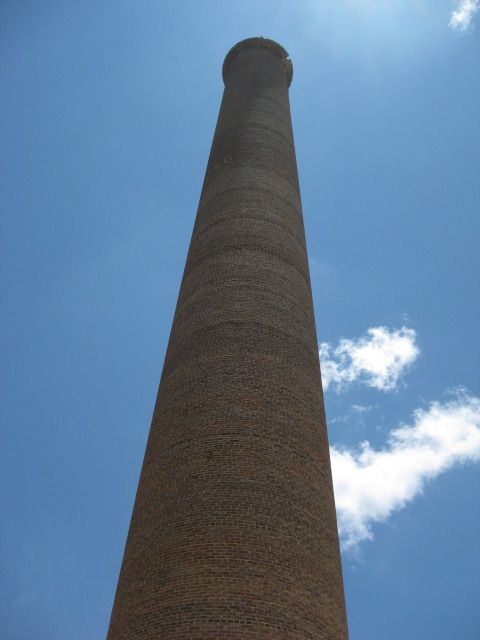

Railroad bridge.
SAN ANTONIO:
About 4-5 miles from El Triunfo is the older mine town of San Antonio, started in 1756 by a Spaniard named Gaspar Pison. He was a rival to California first commercial mine operator, Manuel de Ocio who got a special permit to mine silver beginning in 1748, in an otherwise Jesuit controlled area. Ocio’s ore mill was called the ‘Real de Santa Ana’ and is about 7 miles south of San Antonio. The church in San Antonio was built around 1825 and is regarded as one of the best-looking colonial style church in Baja.
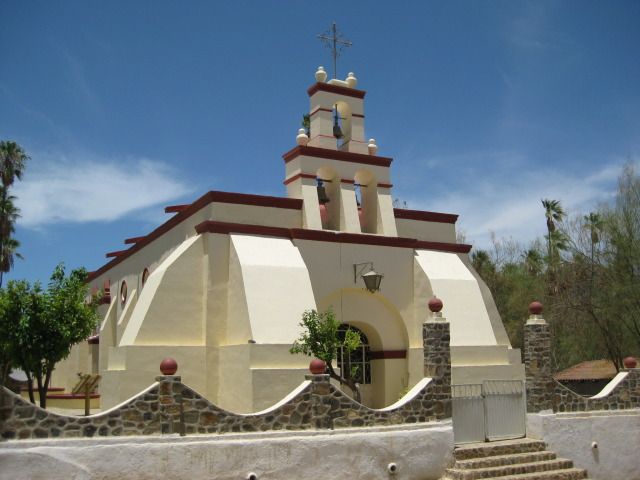
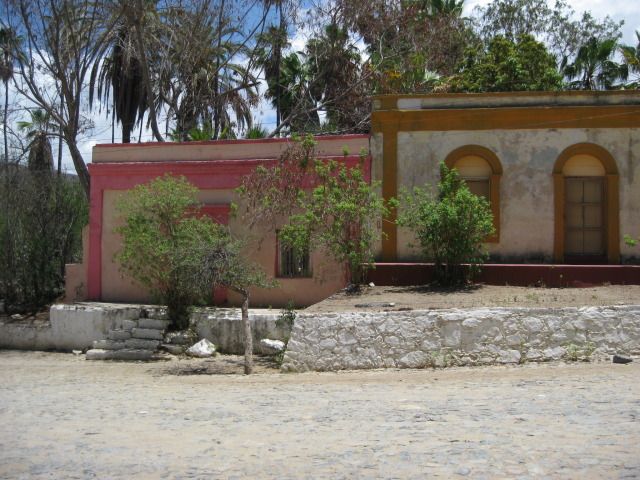
REAL DE SANTA ANA:
The Real de Santa Ana was shown to me by the late Jimmy Smith of Los Barriles, San Ignacio, Baja racing, and flying fame. Jimmy told me back in 2001 that the Real de Santa Ana was one of his favorite places to visit. It is special in that it is the oldest mining operation in all of California and it took special efforts to get the Spanish Viceroy to over-ride the Jesuits’ power-hold over any foreign activity on the peninsula. Bajatripper had attempted to find it in the past, so I was happy to give something special to him.
The access side road is only a couple miles down another dirt road off Highway 1, but a locked gate was soon reached, that wasn’t there 11 years ago at my last visit. We found someone nearby with a key, and thanks to Steve’s fluent Spanish and sincere desire to visit the site only for its historic importance, we gained entry and drove to the trailhead.
Located in a tropical arroyo with mango, plum and flowering trees, it wasn’t long before we arrived at the first mill structure, continued to the second, then finally found the horno (oven) in which the silver was melted into ingots. While there, the sky darkened, and thunder and lightning entertained us. Steve found a small pitahaya fruit and Elizabeth got to taste one for the first time.
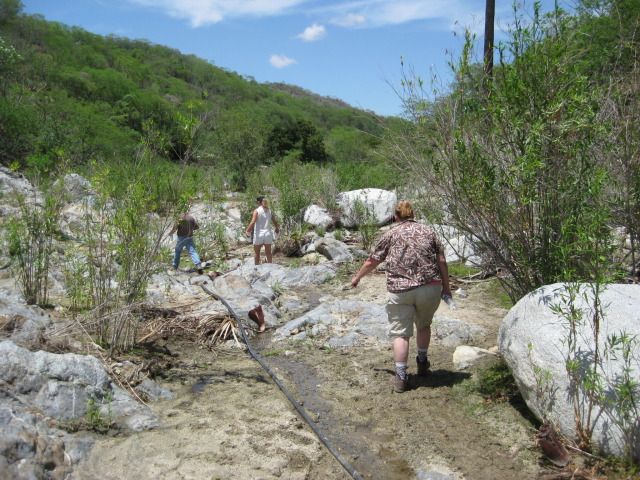
Walking from the road down the arroyo to the 1748 ruins.
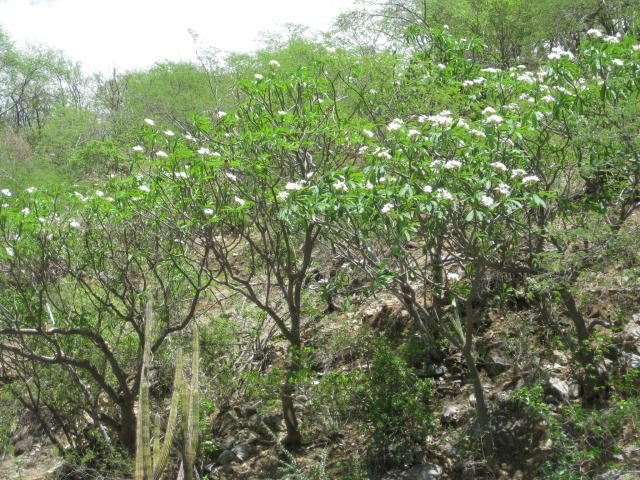
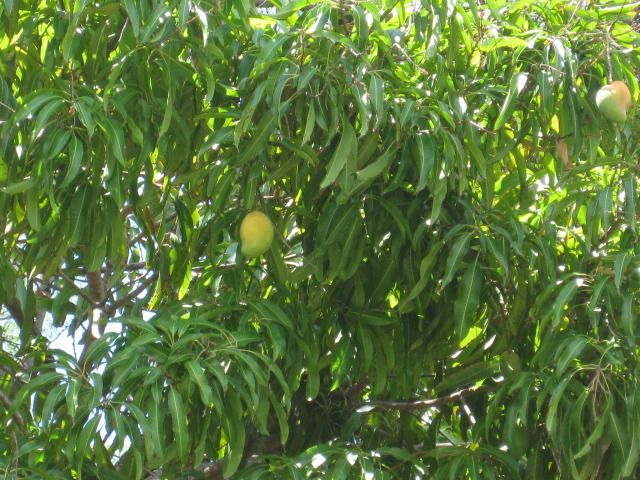
Wild mangos
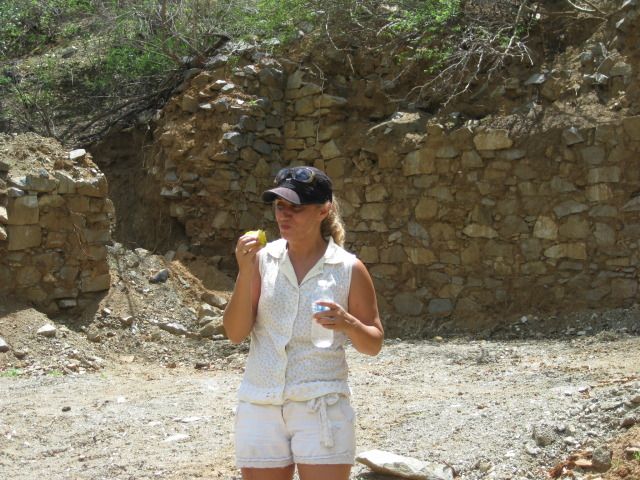
Taste great!

Pitahaya Dulce, the native fruit so popular with all who have lived on the peninsula.

We arrive at the mill ruins.
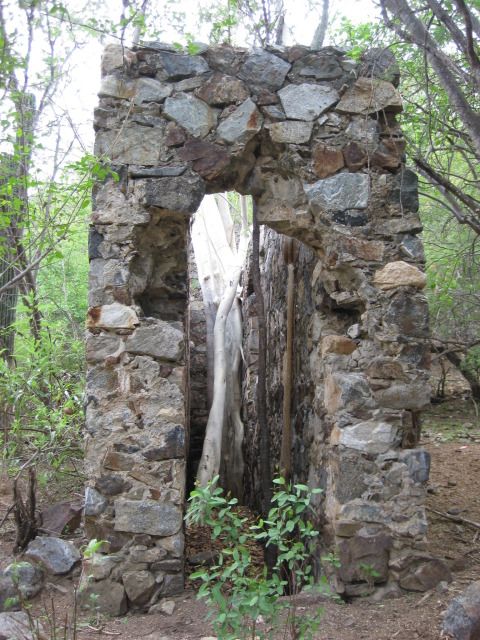
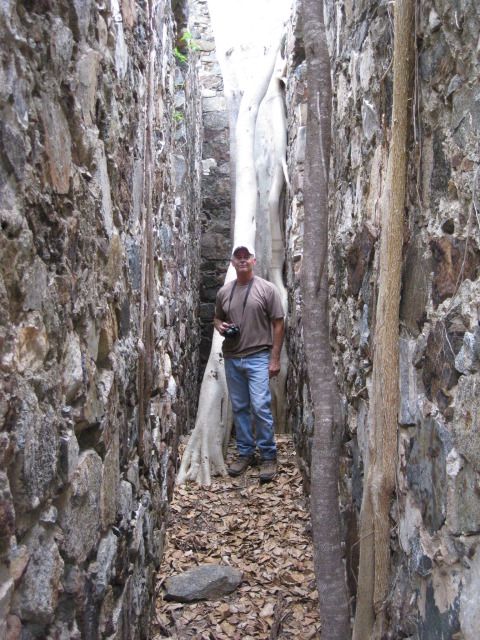

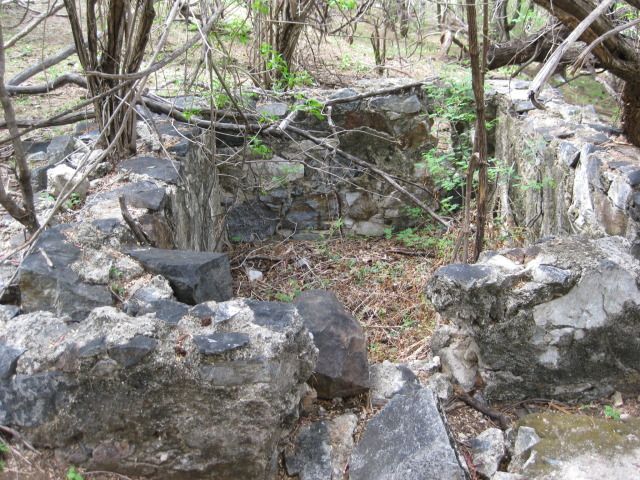

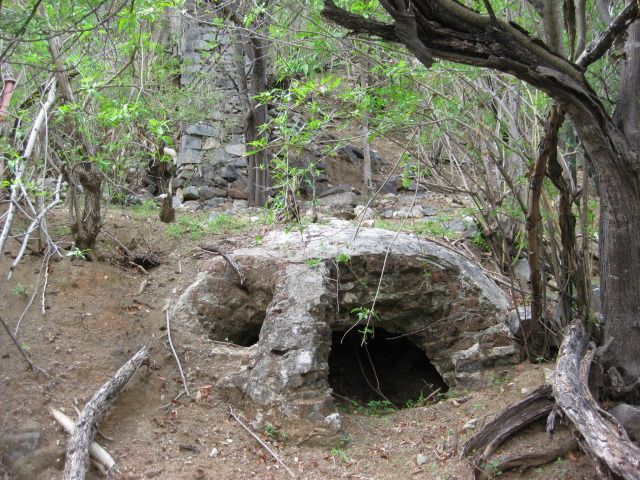
The horno at Real de Santa Ana. Silver ore was melted into silver bars here.
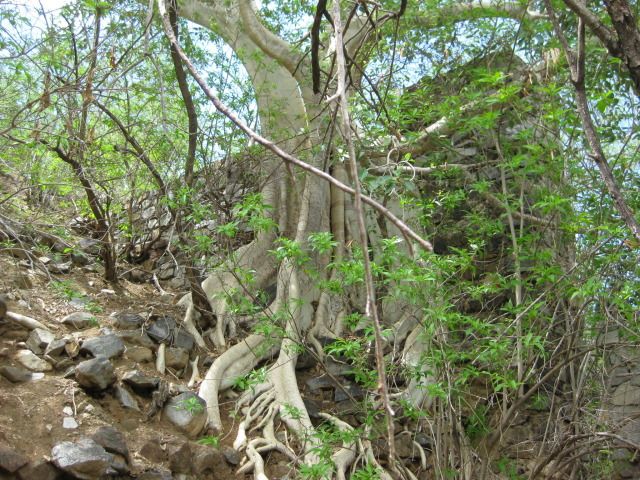
SAN BARTOLO:
Next was San Bartolo which is perhaps the mango capital of Baja California! Mangos everywhere for sale and being dried and candied. We went across the arroyo to a spring fed swimming pool, very popular in the warm days. Fresh water pours out of the mountain here and it is all put to good use for the town and for recreation.

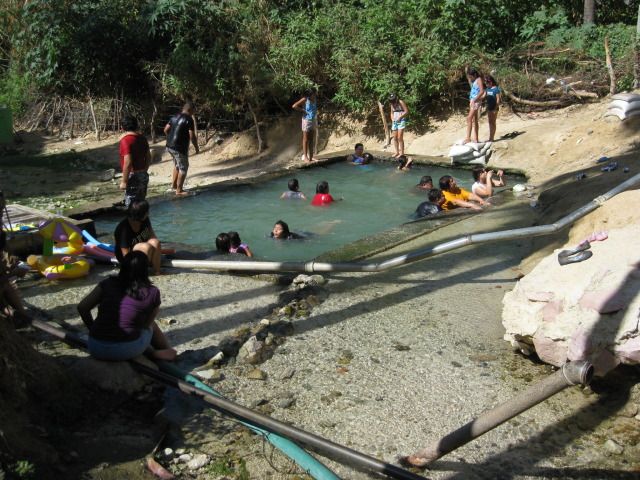
Next stop is Los Barriles, and we have lunch at a BBQ place called Smokey’s. This was the first time on our trip we saw more than one American family in the same day, at the same place! Sadly, American tourism has dropped due to a combination of fear and economics. While I cannot do anything about our lack of income, I will tell you that Baja California is not a place where any foreign tourists need to fear. Crime and violence are typically near the border, on the mainland of Mexico, and between drug traffickers and law enforcement. Tourists are not a target, and you have a lot more to fear in your own city, north of the border.
COAST NORTH OF LOS BARRILES:
We now turn north, and follow the coastline on a dirt road, passing many beautiful homes (most for sale) and the Punta Pescadero Resort and airstrip. The road deteriorates the further north we go. One stop to look at the beach we find a sea turtle nest and her track to/from the water, very cool!


Turtle nest


Palm trees may indicate a fresh water spring, on the beach?
We leave the coast and climb over a mountain and drop to the agricultural region of San Juan de los Planes. It is now dark, but we have a paved highway all the way back to La Paz, BCS #286.

SUNSET near SAN JUAN de los PLANES
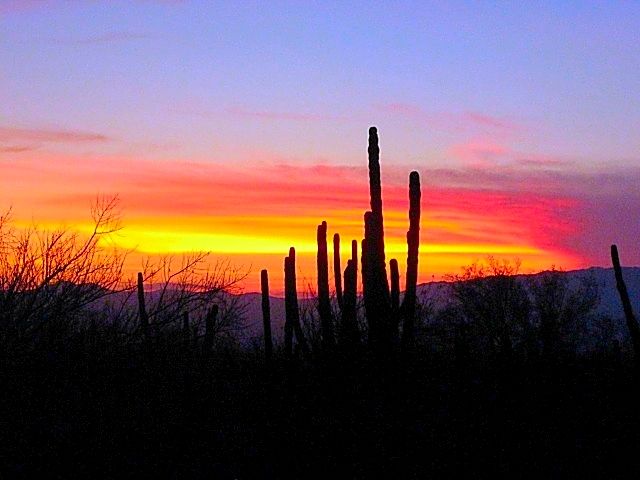
What a great day! More to come
DAY 7, La Paz Museums and Beaches
Friday, July 20th (Day 7): Today, much less driving as we have a visit to two museums in the city of La Paz and spend the afternoon at two beaches: La Balandra and Tecolote.
Steve and Zully were our hosts and guides, as we toured two museums featuring Baja California Sur history. Next, we went to the plaque on a city side street placed by INAH as the possible location for the mission of La Paz, of which nothing remains. The modern church, a few blocks to the north is named as the mission by some books, but there is no connection in reality. Bajatripper has uncovered some evidence that the true location was even in a different place than the plaque, a bit more south? Later, we head to Bahia Balandra and walk out to the famous ‘mushroom rock’ a popular La Paz photo site.
We then head north to Tecolote Beach, which looks across the San Lorenzo channel to Isla Espiritu Santo. Elizabeth and I go for a swim in the calm water as Steve and Zully watch from the beach… Soon Elizabeth says something has hit her arm and she describes the pain… then I get hit on the ankle… yep, jellyfish (agua mala). The single string kind, nothing you can easily see. The burning goes away later, but we know why Bajatripper and Zully, didn’t join us! LOL.
That night, we have dinner at Bajatripper’s favorite hot dog cart, and they make more than hot dogs there. A big line forms soon after we order our burritos and hot dogs.
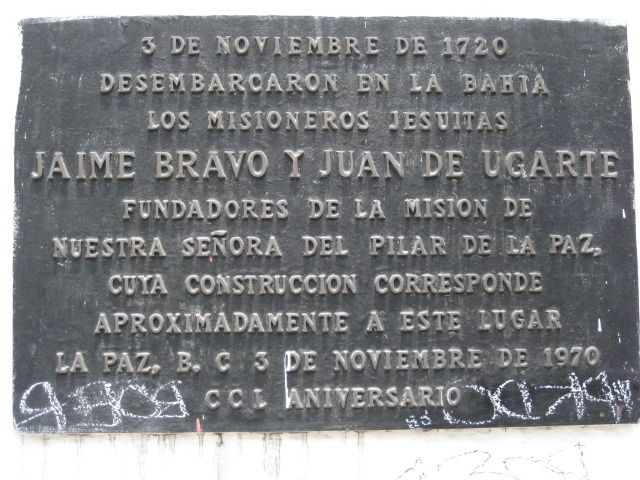
The plaque at the INAH location for the La Paz mission.
In the museum
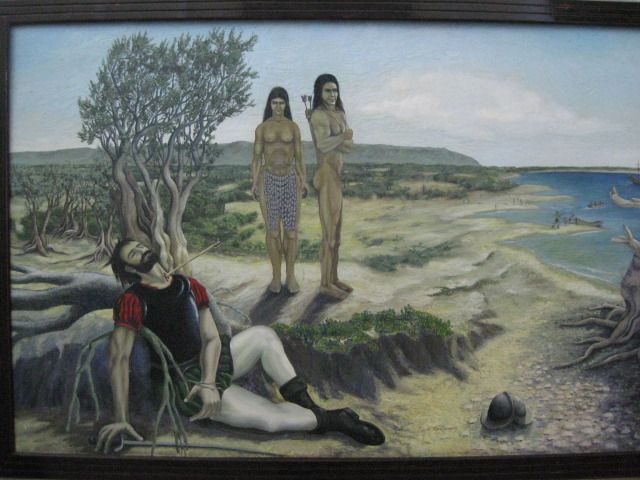
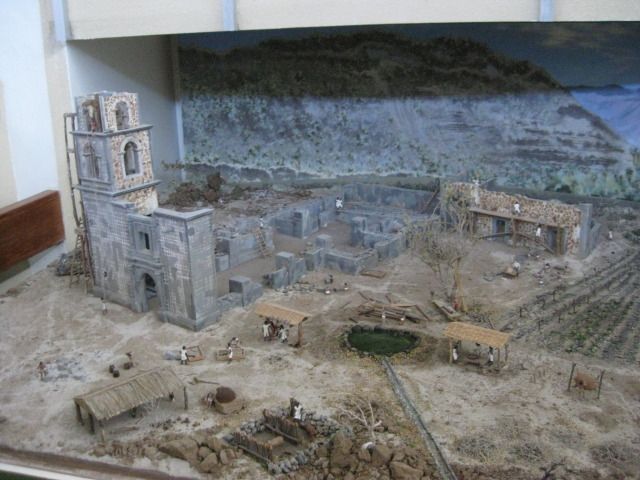
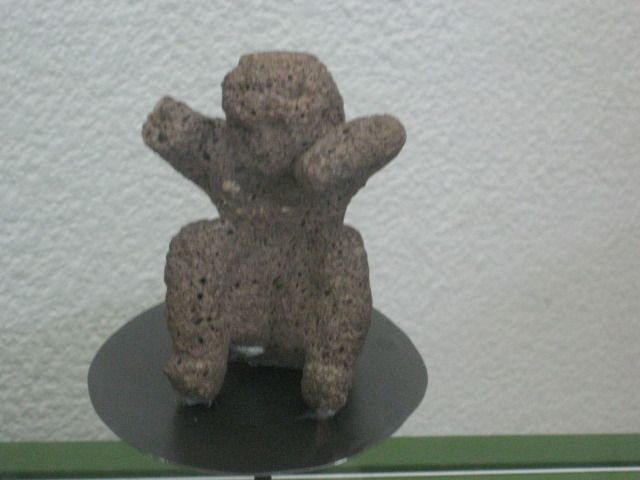
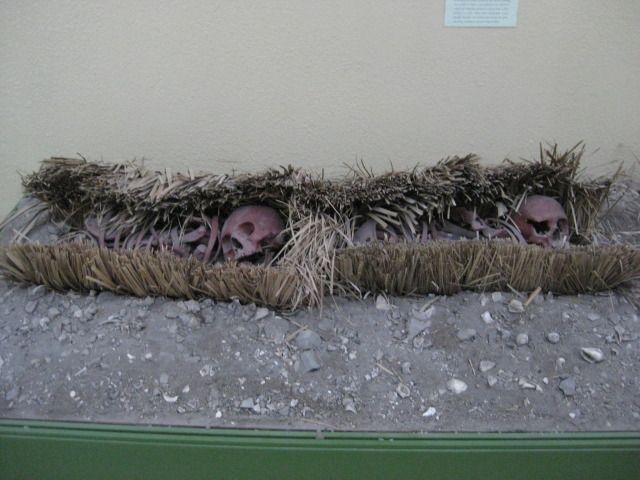

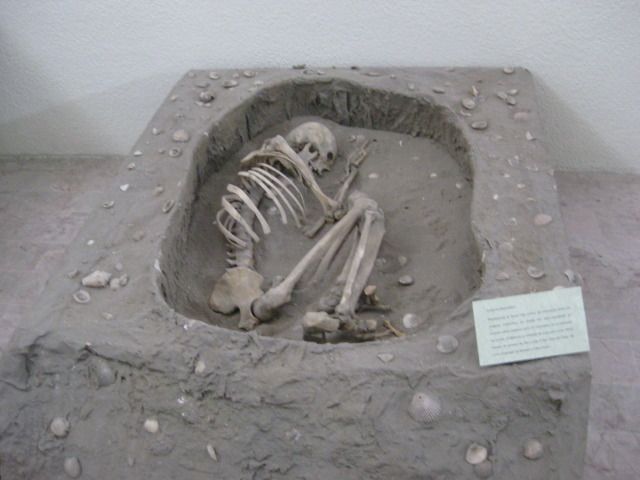
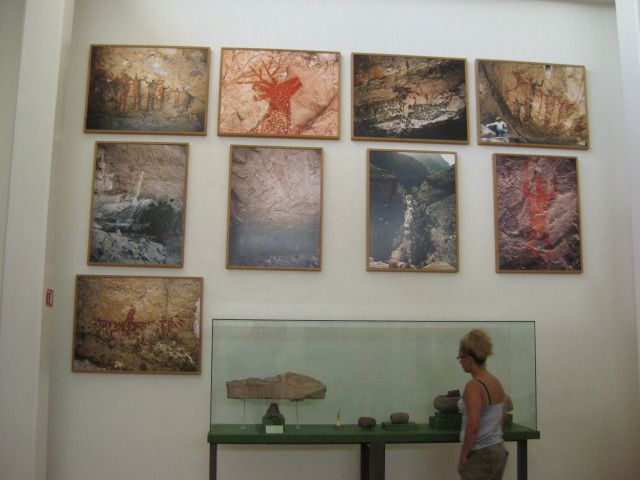
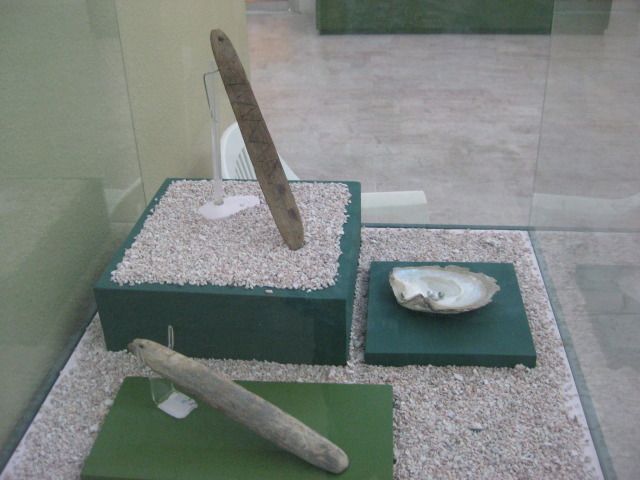

The flag of William Walker’s Republic of Lower California and Sonora (he claimed to be president of).
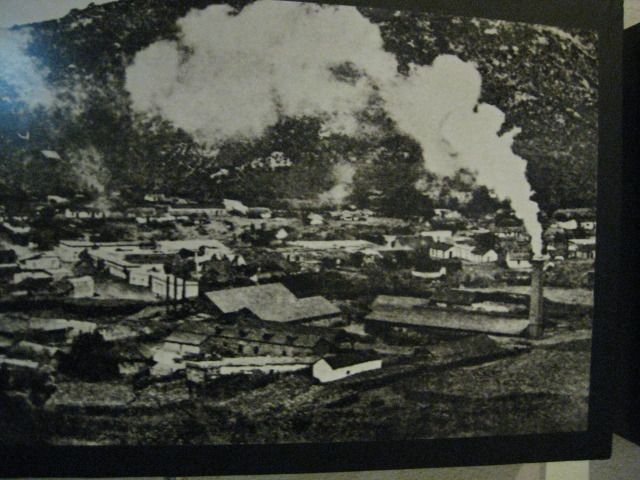
El Triunfo
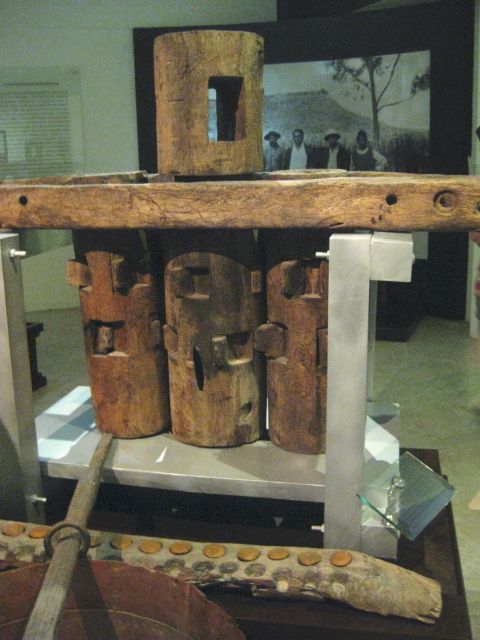
A sugar cane press (Todos Santos history).
We stop by a tile shop, and see some wild bathroom fixtures
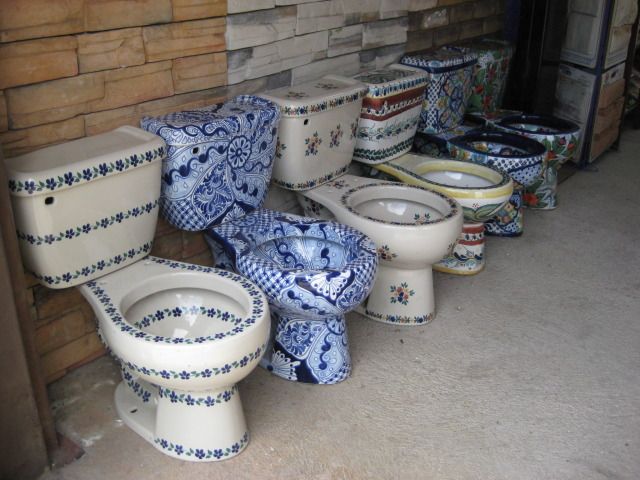

Bahía Balandra:
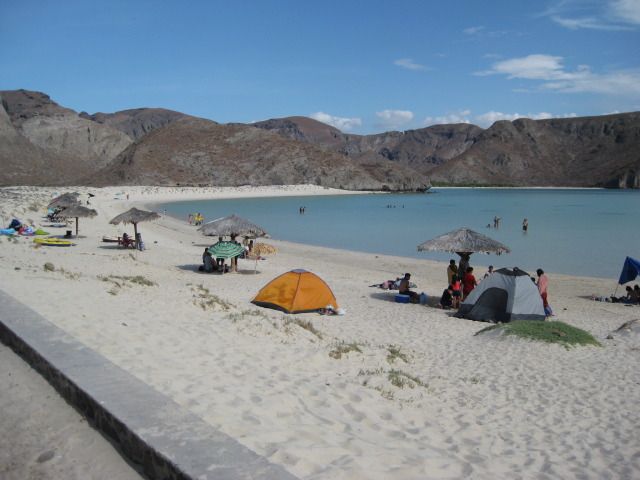
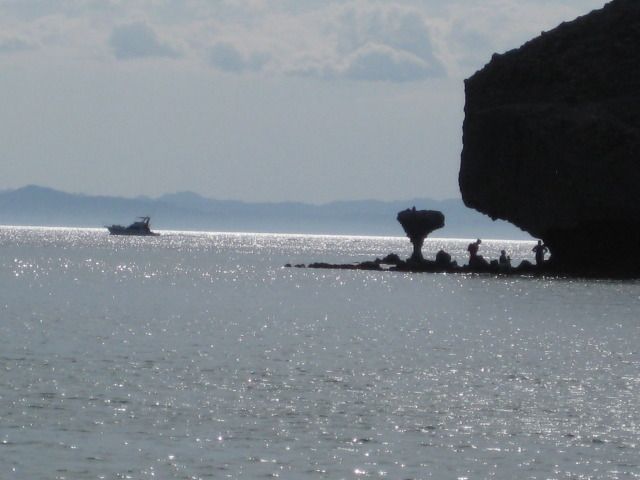

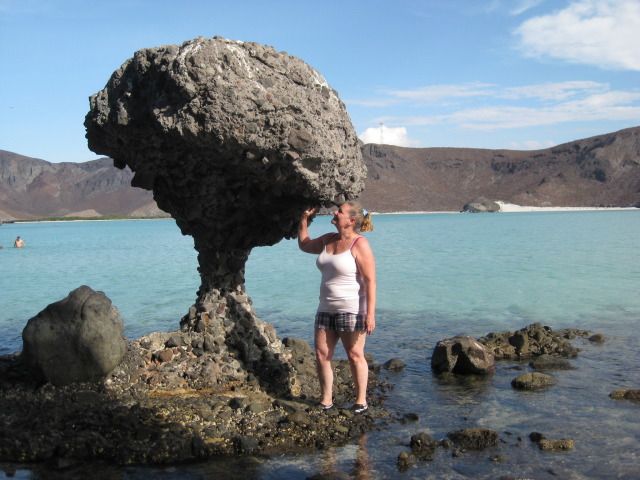
Baja Angel at the famous “Mushroom Rock.”
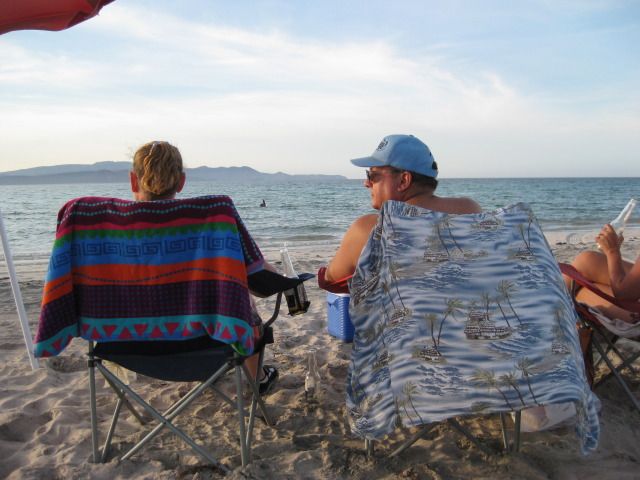
Baja Angel and I at Tecolote Beach.
